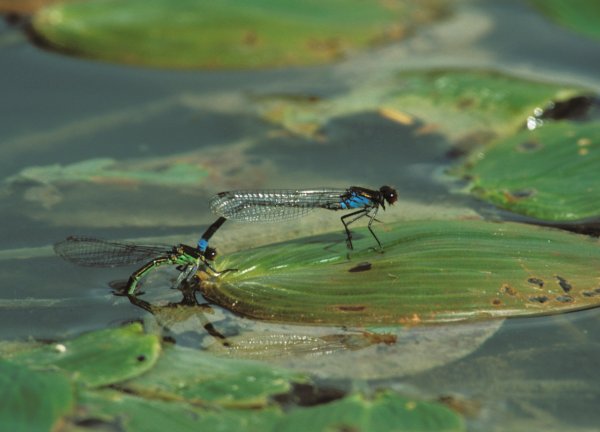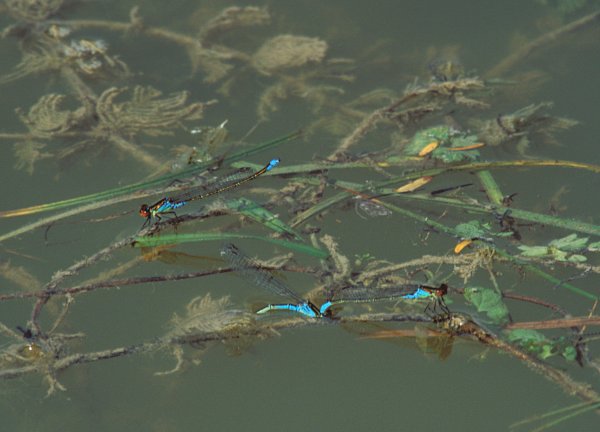Red-eye Damselfly identification
Initially the seperation of Large and Small Red-eyed Damselflies can
appear tricky. However, with careful observation they can be postively
identified. Identification usually requires oberservation through
binoculars or a telescope because both species tend to sit out on
floating weed some distance from the bank. Digiscoping can get you
pictures that can confirm identification.
The features to look for are given below.

|
Large Red-eyed Damselfly
Note
that the blue making on the tail of the male is confined to segments 9
and 10 and appears sharply cut off. Segment 8 of the abdomen appears
all dark brown.
The sides of the thorax of the female and the lower part of the abdomen
close to the thorax is distinctly green.
Large Red-eye tend to prefer to sit on the large floating leaves like
Water Lily and, as in the photo larger pond weeds.
|

|
Small
Red-eyed Damselfly
Note that the
blue making
on the tail of the male is relatively large and distictly wedge shaped.
The bottom of segment 8 is blue and the top appears dark brown.
Also, note the up curved abdomen of the single male. This is a very
good indication that the individual is a Small Red-eye. Check other
characters though because I am not sure this is 100% reliable.
The sides of the thorax of the female and the lower part of the abdomen
close to the thorax is distinctly blue.
Small Red-eyes tend to prefer to sit on semi-submerged plants like
Hornwort and Water Millfoil. However, you will see both species on a
variety of water plants.
|
Photos by Kay Reeve FRPS
Banner artwork by Joan Sharrett Last updated Tue Aug 07 21:49:27 2012
| Visits since March 2020: 4172 |
|

